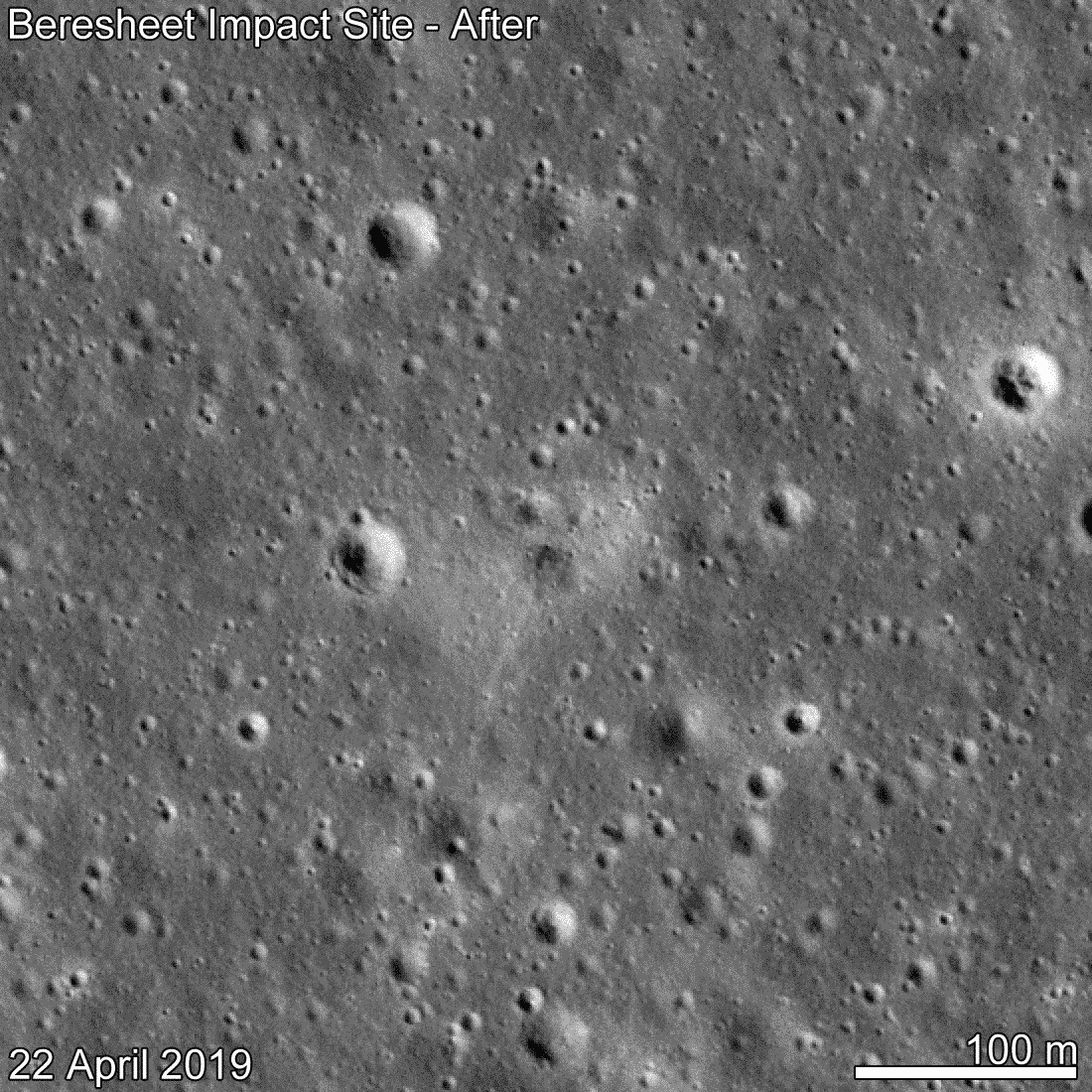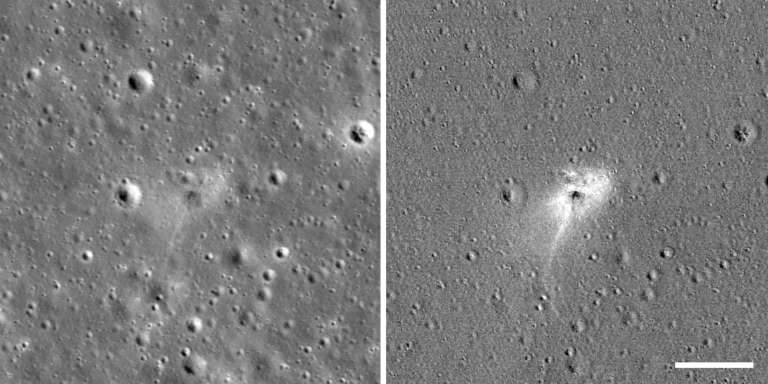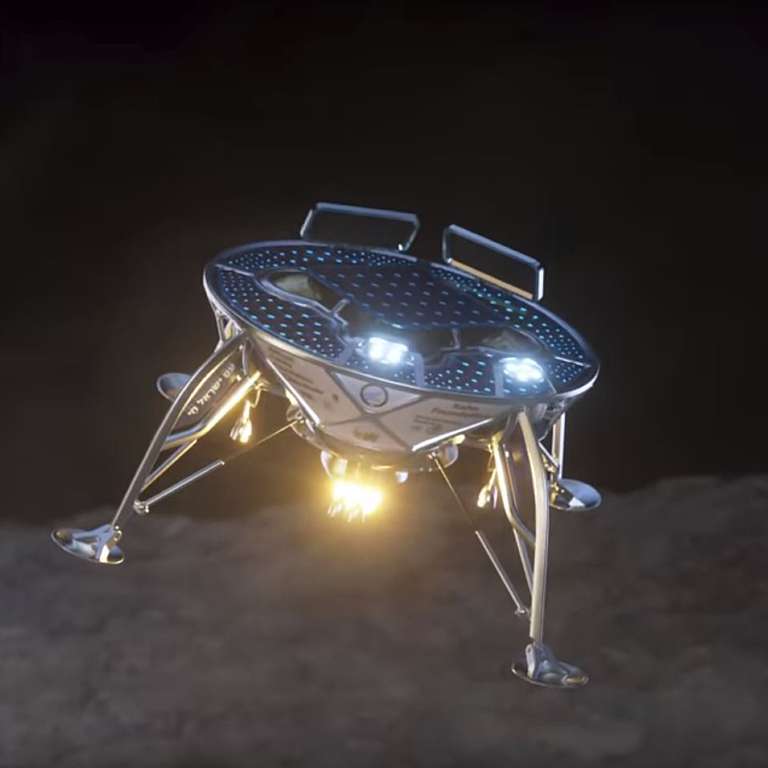Emily Lakdawalla • May 16, 2019
Lunar Reconnaissance Orbiter Images Beresheet Impact Site
Ouch.

Lunar Reconnaissance Orbiter has successfully imaged the impact site of the Beresheet lander, which made a really good run at performing the first privately funded Moon landing on 11 April, but crashed after the failure of its main engine. What can we learn about the end of Beresheet from the photo? Mark Robinson explains over at the Lunar Reconnaissance Orbiter Camera website what he sees in the image. It helps to ratio the "before" and "after" images, comparing the value of each image pixel by pixel. Where the impact brightened the surface, it appears light; where the impact darkened the surface, it appears dark; where there was no change, it's medium gray.

The first thing you can learn is the location of Beresheet's final resting place: 32.5956°N, 19.3496°E, at an elevation of about 2,613 meters. Robinson also reads what he can from the shape of the dark smudge and bright halo:
The point of impact is marked by a dark smudge about 10 meters across, where the surface reflectance was lowered by about 10%. At the scale of the [narrow-angle camera] image we cannot detect a crater; perhaps there is one but it is simply too small to be seen, or the low angle of impact (less than ten degrees relative to the surface), the fragility of the spacecraft, and the velocity precluded crater formation (think gouge rather than crater). The smudge is likely a roughened surface (more micro-shadows) due to the impact and disintegration of the lander. Surrounding the smudge is an area of increased reflectance (up to 20% higher). This ragged zone spans 30 to 50 meters from the smudge and includes a ray that extends southward about 100 meters. The higher reflectance was likely caused by gases or very fine high-speed particles rapidly moving away from the impact site, which smoothed the upper layer of regolith and redistributed fine soil particles, which in turn increased reflectance.
Beresheet1, a private Israeli Moon mission
Beresheet1 was a private Moon lander by Israeli non-profit SpaceIL that crashed on the surface in 2019.
The Time is Now.
As a Planetary Defender, you’re part of our mission to decrease the risk of Earth being hit by an asteroid or comet.
Donate Today

 Explore Worlds
Explore Worlds Find Life
Find Life Defend Earth
Defend Earth


